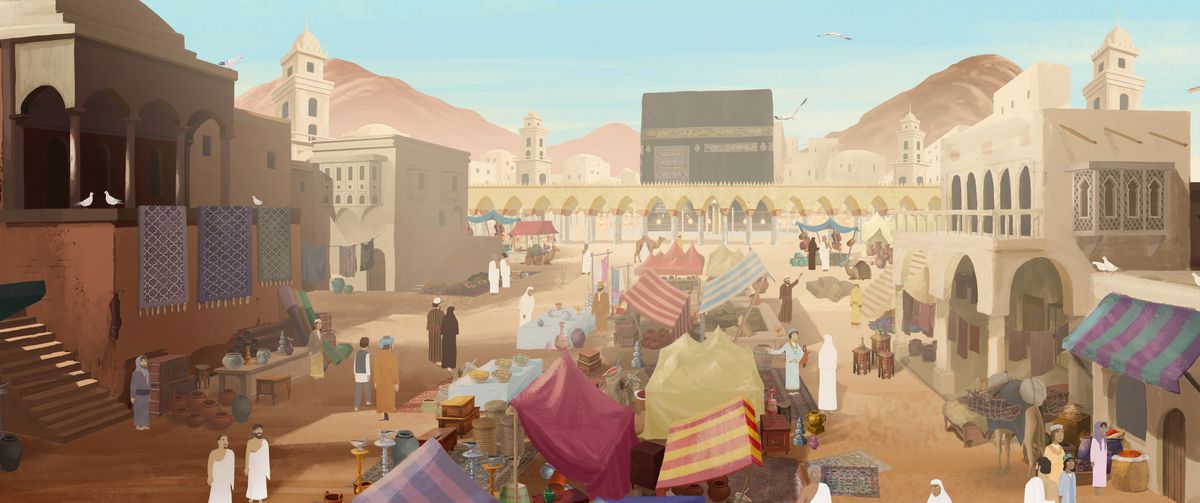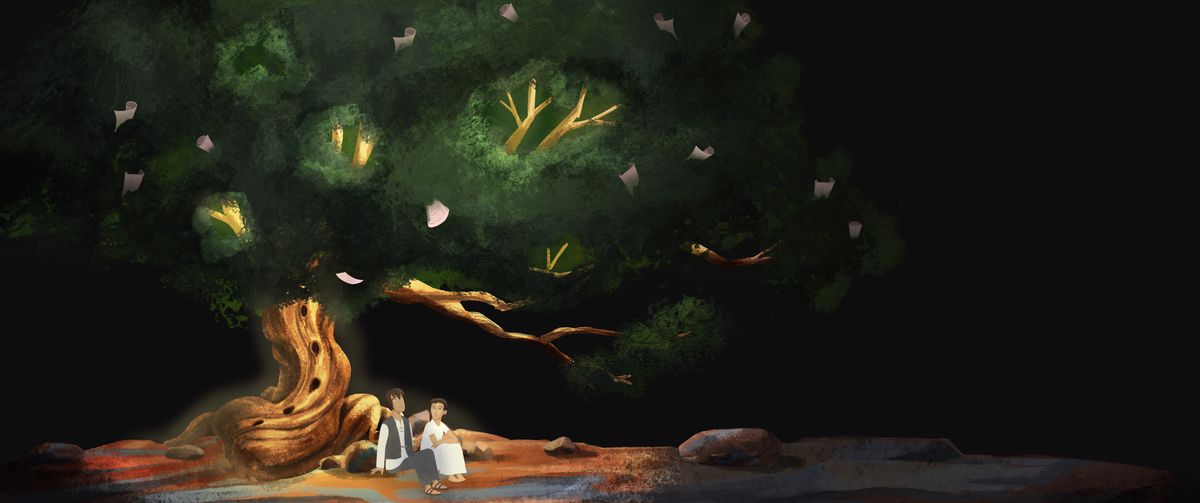Lamya’s Poem is a hidden gem, a movie that defies expectations for modern American animation but may resonate with fans of international projects like Cartoon Saloon’s The Breadwinner. The direct-to-streaming release comes from nonprofit education studio Unity Productions Foundation, founded by speaker and writer Alexander Kronemer, who wrote and directed the film. It follows a bright young girl named Lamya (Millie Davis), who finds solace in the poetry of 13th-century scholar Rumi (Mena Massoud) after she’s forced to flee from her hometown of Aleppo during the Syrian Civil War.
The movie tackles three intertwined plotlines: Lamya’s escape from Syria, Rumi’s similar emigration after a Mongol invasion, and a meeting between the two of them in a strange fantasy world, where they encounter metaphorical beings that represent the dangers each of them faces. On their own, any of these plotlines could carry a whole movie. Lamya struggles to keep her head high when all hope is lost. Rumi wrestles with his desire for revenge, which overcomes his devotion to his poetry. And in the dream realm, the two of them meet up and discover a mysterious city under attack.
Image: Unity Productions Foundation
When Kronemer brings them together, however, they sometimes detract from one another — especially the fantasy plotline, which occasionally undermines the characters’ individual journeys. Still, at the movie’s climax, all three threads merge, with Rumi’s poetry stringing them together, and it synergizes into a beautiful, evocative moment.
The gorgeously rendered backgrounds help bolster that beauty. Lamya’s Poem has its limitations, particularly in the stilted character animation, but the exquisitely painted scenery more than makes up for it. The fantastical dream world has the most eye-catching visuals, but even mundane backgrounds in Lamya’s hometown streets or Rumi’s desert trek are lovingly rendered. And that artistry isn’t reserved solely for the rosy moments. Some of the movie’s most difficult scenes — Lamya and her mother on a raft from Syria, Lamya alone in a refugee camp — resonate all the more when the scenery plays such a huge role.

Image: Unity Productions Foundation
Lamya’s Poem draws parallels between the Syrian refugee crisis (along with the prejudice Lamya faces when she ends up in an unspecified European country) and Rumi’s own emigration from Samarkand after the Mongol invasion. These are weighty themes, but Kronemer avoids showing explicit violence. Instead, he uses poetry to thread his dark storylines together. Lamya repeats one particular Rumi poem about reeds cut from their source throughout the film, and as the movie progresses, the meaning behind the words becomes more and more apparent — Lamya and Rumi are both cut off from their homelands.
And that idea connects them, just as much as the actual poem gives them a link that stretches across time. There aren’t as many poems in this movie as a story about poetry might have, but that just emphasizes the importance of the particular piece Lamya latches onto, which Rumi himself composes in the flashback. It’s a testament to the power of poetry and art, and how it links people together through time and resonates with human truths unchanged throughout centuries. Lamya’s Poem shares the transcendental impact art can have by being a special piece of art itself.

Image: Unity Productions Foundation
Lamya’s Poem is available to rent on Amazon, iTunes, Apple TV, Vudu, Google Play, and other digital platforms.
